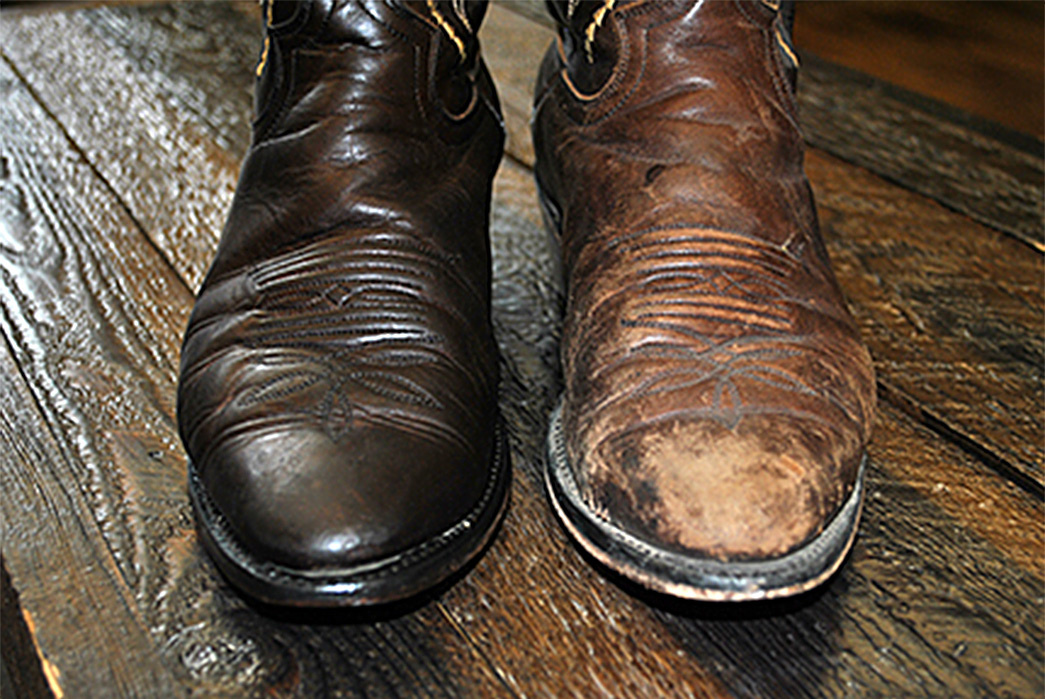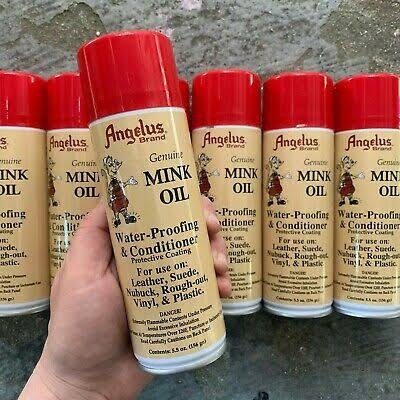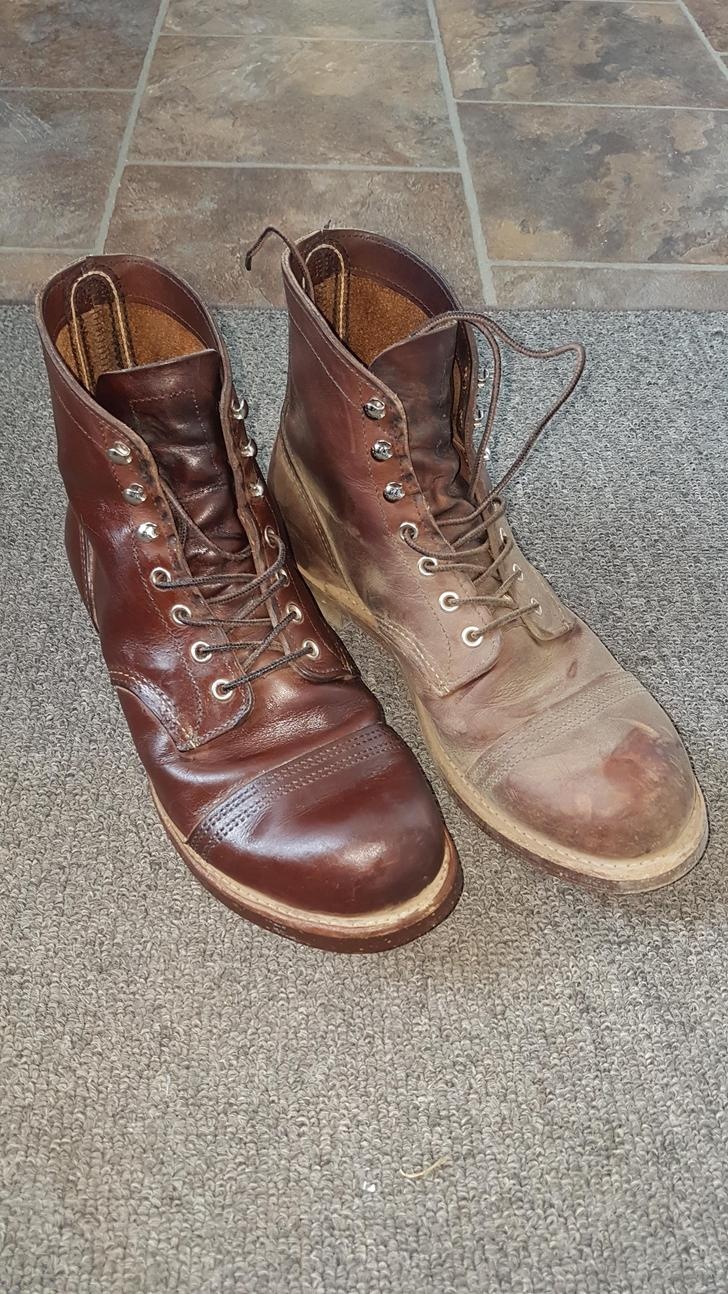How to Care for Smooth Leathers
- Posted on
- 0

The ultimate guide for keeping your leather shoes looking new and lasting longer.
Smooth leathers are one of the most popular materials in the shoe-maker industry. It is durable, looks nice, and forms to the foot leading to a more comfortable fit. Because of its durable reputation, many people buy a new pair of leather boots and do not put anything into them for care or do not keep up on caring for them.
Why care for your footwear?
Keeping on top of certain care procedures is essential when it comes to leather. It can be the difference between a boot lasting 2 years and a boot lasting 10. It is important to remember what leather is. It is a skin barrier. Just like how we protect our skin from a sunburn using sunscreen or the cold using insulated clothing, leather requires protection to keep it from damage.

What to Do For Your Shoe
It is important to note that this post is for smooth leathers only. If you are trying to care for a nubuck or suede leather go to our post on how to care for them located here.
#1: Spray Right Away… and Then Occasionally
Leather spray, waterproofing spray, and all protecting spray are all essentially the same thing: a clear product that comes in a spray can and is used as a preventative measure to protect leather footwear. This amazing product works by adding a protective barrier over top of the leather. It prevents discolouration of the shoe due to sun exposure, makes shoes easier to clean because it blocks dirt from getting into the leather pores, shields from staining, and helps with waterproofing. It is one of the few true products that prevents wear and tear rather than dealing with it after it happens. Many companies make a variation of this product and recommend using it before you wear them outside for the first time and then again once a month for every month after. We definitely recommend spraying your new footwear right away before you wear them outside. However, spaying them once a month can become a chore. In reality, unless you are SUPER hard on your shoes, opting out of a once a month chore and opting into a once every few months to once a season spraying routine is likely not going to be a problem. It is a good idea to spray a pair of shoes after every cleaning or oiling so doing it all at once is a great way to keep your footwear protected without the hassle of re-spraying them again later. Although, any leather spray can usually do the trick, we recommend Angelus Mink Oil Spray as it hydrates as it protects and mink oil is phenomenal for its waterproofing quality. This spray on rare occasions can darken leathers so if you are caring for a lighter leather, we recommend Storey’s leather protector spray as it offers more product than many other brands and doesn’t darken leathers. It is important to note that almost all leather protect sprays are very strong smelling and need to be sprayed outside or in a well-ventilated area.

#2: Cleaning
If you have gone for a walk on a muddy trail, or have noticed your boots look dirty, it may be time for cleaning. If you have kept up on your shoe spraying practices, cleaning can be done with a soft cloth and some water in most cases. However, if you have not sprayed your shoes or they are REALLY dirty, you may require more than just water. This is where leather cleaner comes in. Choosing the leather cleaner right for you depends on the color and texture of the shoes. Some cleaners can darken leathers and soaps can be more moisture stripping. It is a lot like choosing soap for your own skin. Showering with dish soap may be effective at cleaning but will also likely leave your skin dry and irritated. Using the wrong cleaning product for your shoes will also lead to dryness and discolouration. If you have mid-range to darker color leather, RedWing foam leather cleaner tends to do a great job at cleaning without stripping the leather of moisture as much as other products on the market. If you have a light leather, RedWing cleaner may darken the leather a bit. If you are trying to maintain the color, we suggest Saddle Soap as it tends not to change colors as much. However, if using Saddle Soap, do so sparingly as the product can quickly strip away moisture from the leather. As for how often to clean your footwear, it depends on your preferences and lifestyle. if using just some water or a horsehair brush, you can choose to clean them as much as every time you go out or as little as once every few months. When using cleaners, we would recommend no more than once a month.

#3: When to Hydrate and When to Color
The most notorious shoe care product is shoe polish. Often it is the first thing people look for when their boots start to wear. Despite its popularity, it is not the most effective option. Not only do you have to color match polish for each specific pair of shoes, it often focuses more on depositing color to cover up any wear than fixing the root problem. Many of the causes for color loss and overall worn out looking footwear is due to the leather drying out. Keeping leather moisturized is what prevents cracking, scuffing, and overall dull looking leather. Further, a majority of hydrating products are colorless so it can be used on most colors. It is important to note that it is a good idea to test any hydrating product on a patch of leather you are going to use it on in case it does not interact in the desired way.

Darker Leathers:
If you are caring for darker leathers, mink oil is our top recommendation. Mink oil is extremely hydrating and shines up leather fast. It is one of the most effective products for waterproofing and bringing shoes back to their original glory. We recommend Fiebing's Mink Oil specifically as it contains silicon which helps even further with waterproofing and shine. Other products that can work include pine pitch and beeswax. Pine pitch can still be quite shiny but not as waterproof, and beeswax tends to be better of the two at waterproofing and appears more matte.
Lighter Leathers:
Lighter leathers will darken with the use of certain oils and pastes. This is where RedWing Neatsfoot Leather Cream shines. The Neatsfoot oil does not clog the pores of the leather which many other products do. Although this will not help with waterproofing as much, it does prevent the boot from becoming greasy. RedWing’s formula is also a nice easy-to-use consistency that melts into the boot beautifully. It can be a little trickier to find hydrating products that work with light leathers. When on the lookout for one, always test it on a small spot on your shoes and look for creams instead of oils.
For Deep Scratches in the Leather:
A hydrating cream will cover most discolouration. However, if there is a spot where the leather’s surface has been scratched (it will be bumpy or be a VERY different color from the boot) then hydration will not take it out. Shoe polish or leather dye is the answer at this stage. Usually, to make sure it is not just a scuff we recommend going over it with a hydrating product first before trying a polish or dye. If the area goes away or minimizes in appearance, then it is likely just a scuff and keeping it hydrated is more than enough. If the area stays, then it is a scratch and will need to have pigment put into it to blend it into the leather. For such cases, we recommend Kiwi brand as it is easy to use and gives a lovely, natural result. However, Kiwi tends to have a more limited color range from most brands and thus, getting a cobbler to color match a polish to the shoes can also be a very effective way to get what you need.

Conclusion
Care for your shoes can be very intimidating, especially for those who are new to it. At the most basic level, as long as you have a leather spray, a cleaning method, and a hydration cream you should be able to care for your smooth leather footwear no problem. Don’t be afraid to ask about or research an individual product before you buy. Also don’t be afraid to try out other products and brands. What you may not like in one brand may not be present in another. Finally, what works great for one pair may not work so great for others so remember to always test out your products on a small area of each pair of shoes before you use it all over.












Comments
Be the first to comment...